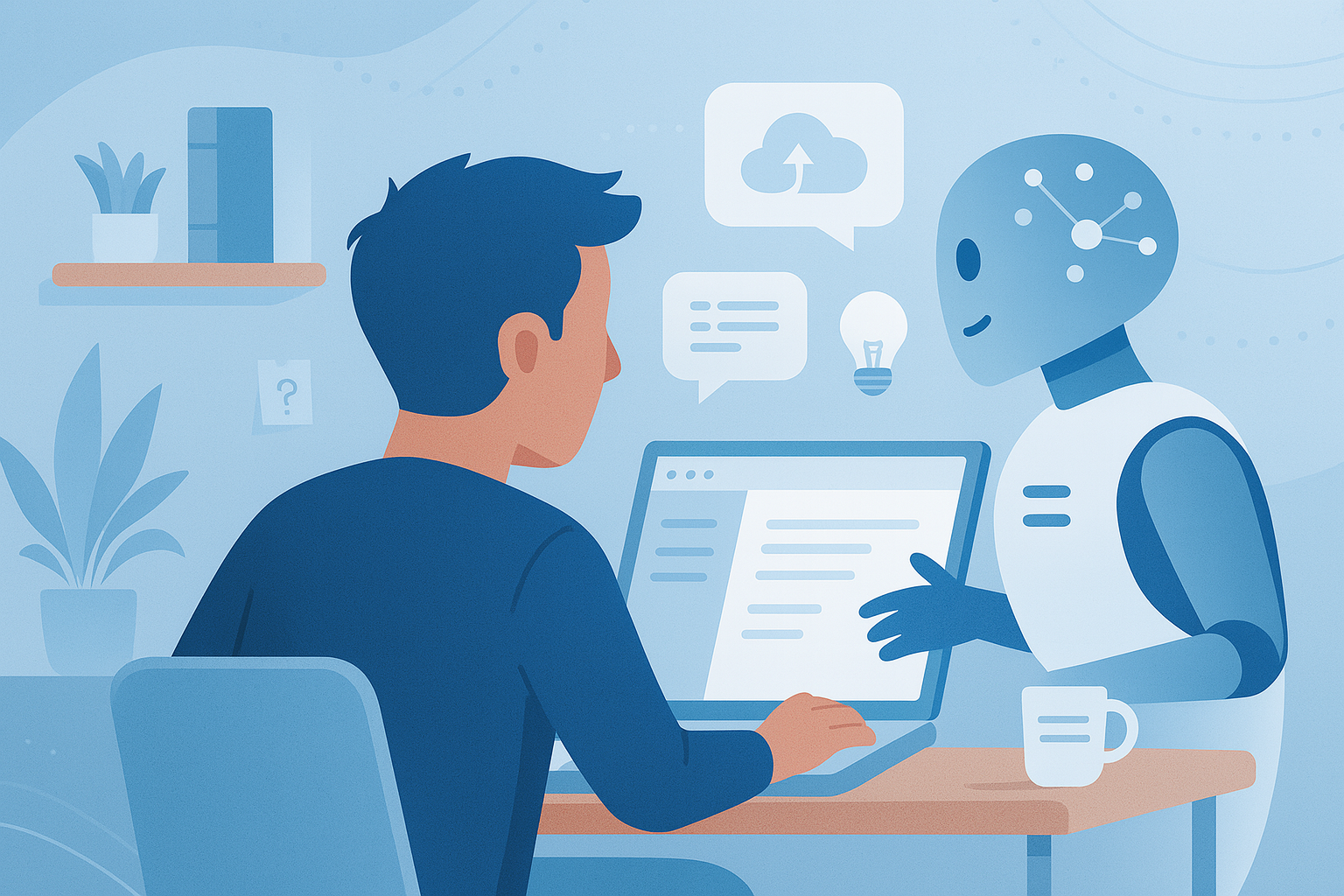Learning with AI Without Losing My Mind (or Integrity)
June 26, 2025 • 3 min read

Learning with AI Without Losing My Mind (or Integrity) #
1. Why I Wrote This #
I’ve always been a hands-on learner. That made switching into data science both exciting and frustrating. The projects, the logic, the puzzle-solving, I loved all of it. But the moment something didn’t make sense or a bug wouldn’t go away, I could spiral into hours of trial and error.
Then I started using ChatGPT.
At first, it felt like having a second brain. I could ask it anything like how to fix an error, what a p-value meant, or how to write better SQL. But over time, I realized this tool could either sharpen my thinking or replace it. It all depended on how I used it.
2. Understanding, Not Just Answer-Hunting #
One of the earliest ways ChatGPT helped me was by breaking down tricky concepts. Some of the most important ideas in data science don’t click right away, especially when textbooks overcomplicate them.
I’d ask ChatGPT to explain terms like regularization or confusion matrices in plain language. Sometimes I’d ask it to quiz me or make fill-in-the-blank questions for practice. The answers weren’t always perfect, but asking better questions helped me think more deeply.
When I was studying for the AWS Cloud Practitioner exam, I used it the same way for reviewing cloud terms, comparing pricing models, and prepping for scenario-based questions. It wasn’t about memorization. It was about learning to reason through the “why.”
3. When It Helps and When It Hurts #
ChatGPT is incredibly good at sounding confident, even when it’s wrong.
There were times I lost hours chasing solutions that didn’t work, assuming the mistake was mine, not the model’s. Eventually, I learned to slow down and cross-check answers against official documentation or step through code line by line.
It’s a helpful tool, but not a source of truth. More like a mirror for your curiosity, and sometimes your confusion.
4. The Loop You Don’t Want to Get Stuck In #
One night I spent nearly two hours trying to get two AWS Lambda functions to trigger one another. ChatGPT gave me multiple strategies: chaining, invoking, event triggers. Nothing worked.
Eventually, I stepped away and rethought the architecture. The next day, I came back with a clearer idea: Step Functions. Suddenly everything made sense.
That wasn’t a coding issue, it was a mindset trap. When you stay in “ChatGPT mode” too long, you stop troubleshooting and start chasing. Sometimes the best debugging tool is just stepping away.
5. A Brainstorming Buddy, Not a Crutch #
Despite those pitfalls, I still use ChatGPT nearly every day, but now as a thinking partner, not a shortcut.
I use it to brainstorm project ideas, clarify outlines, or even figure out how to explain concepts to someone non-technical. That kind of communication matters just as much as the modeling.
Where ChatGPT shines is helping me think better, not just move faster.
6. Staying the Student #
I won’t pretend I haven’t been tempted to let ChatGPT just write the code or solve the bug. But that’s a dangerous habit, especially when prepping for interviews.
Because eventually someone will ask: Can you walk me through your thinking? And if I didn’t really do the work, it will show.
So I’ve trained myself to pause before prompting. To stay in charge of the process. To read, reflect, and revise, not just copy and paste.
Final Thoughts #
ChatGPT is one of the best learning tools I’ve ever used, as long as I stay the one learning.
It helps me explore creatively, debug with more confidence, and reflect more deeply. But it only works if I stay engaged. I’m training myself, not just building models.
ChatGPT is the assistant. I’m doing the work. And honestly, I wouldn’t want it any other way.
Last updated on June 26, 2025
